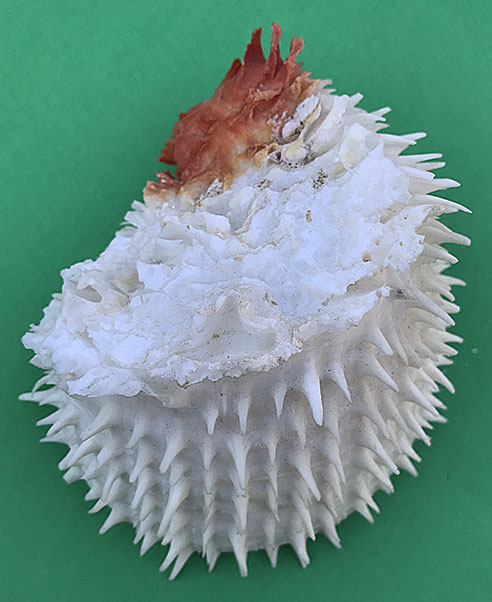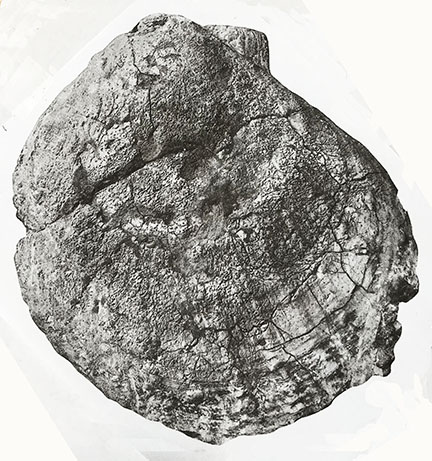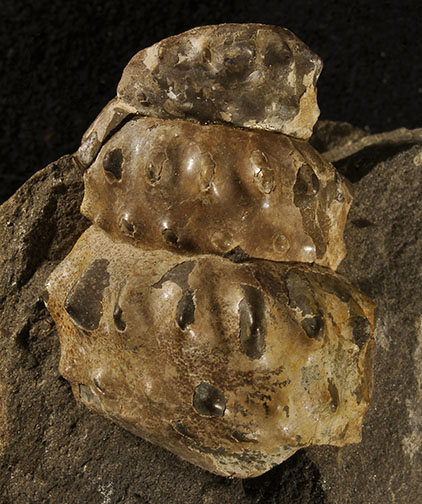Ammonites are fossil shells of predatory mollusks (cephalopods) that swam in shallow seas during Devonian through Cretaceous time (an interval of about 340 million years). The previous two posts focused on flat-coiled (like a coiled rope) ammonite shells, which the majority of ammonites had. This post focuses, however, on irregularly coiled ammonite shells. These can have a helicoidal shape, which can resemble hooks, paper clips; a slightly bent or U-shaped shape (like those of "under-the-sink drain pipes;" or a “Gordian knots.” All of these unusual shaped ammonites are called “heteromorphs,” meaning “different shapes.”
There are at least approximately 60 known heteromorph genera (way too many to show each in a blog or a series of blogs). In addition, there are about 15 or some other genera that might be synonyms of some of the previously named genera.
There were pulses of new genera evolving, as well as times of old genera that went extinct throughout the 340 million-year geologic range of heteromorph ammonites. There were only a few that lived during the Triassic and Early Jurassic. The Late Jurassic had only moderate diversity, but during the Early Cretaceous their numbers greatly increased (approximately 35 genera). Heteromorphs declined during the Late Cretaceous (approximately 25 genera), and after the end of the Cretaceous, all ammonites (including heteromorphs) went extinct.
It is interesting to note that heteromorphs were not confined to a single family nor to a single geographic area or geologic age. Many had widespread dispersal because of their swimming ability; thus, most ammonites are excellent for age correlation of stratigraphic units. It is likely that some of the more complex-shaped (e.g. paper clips) heteromorphs could not swim very well and spent most of their time foraging along shallow-ocean floor.
The first example of an heteromorph ammonite shown below is from a state, other than California, in the USA.
1. Didymoceras stevensoni Whitfield, 1877, 23 cm height, Late Cretaceous: late Campanian; Colorado, Wyoming, Montana, Delaware. Referred to by some researchers as belonging in the genus Cirroceras. [Image credit: Wikimedia Commons].
2. Ancyloceras? sp., 7 cm diameter (estimated) (plaster replica). I have no information about this plaster replica of a heteromorph, but it must have taken painstaking effort to clean this specimen from its rock matrix and then make a replica.
Shown below are nine examples of Late Cretaceous heteromorphs from California. They are arranged by geologic age, from oldest to youngest. I have included also a geologic time diagram to show the various subdivisions (stages) of the Late Cretaceous and their associated geologic ages (in millions of years before present).
1. Turrilites dilleri Murphy and Rodda, 1960, 3 cm height (partial), Early Cretaceous/Late Cretaceous boundary: (Albian to early Cenomanian), Ono area, northern California.
2. Turrilites sp., 5 cm height (estimated) (plaster replica). Notice that the aperture is on the left (sinistrial) side of the shell. Age and locality unknown.
3. Hamites sp., 3.3 cm height (a fragment). Late Cretaceous: Late Turonian; Santa Ana Mountains, southern California.
4. Hamites? sp. (plaster replica) I have no information about this heteromorph.
5. Genus and family unknown (two views). The specimen is a fragment, 5.8 cm length. Late Cretaceous: late Turonian; Santa Ana Mountains, southern California.
6. scaphitid, 3 cm height (not a complete specimen). Late Cretaceous: Late Turonian to early Coniacian; Santa Monica Mountains, southern California. Specimens from this locale are very poor preserved as mashed, flimsy specimens on bedding planes in a micaceous siltstone. Preservation is too poor to positively determine genera or species.
7. Baculites sp. (two specimens). The larger specimen (8.4 cm length) has most of its shell missing. Late Cretaceous: middle Campanian; Pentz area, northern California. Near one end of the largest specimen, its sutures (internal walls of the chambers) are visible (these are part of the internal structure of the shell). The smaller specimen (4.2 cm length) has no external shell left, but its complex suture pattern is visible. If you are interested in reading more about ammonite sutures and how they changed through time, please read my blog post of Oct. 14, 2014. Use the Search Box at the top of my posts.
8. Eubaculites sp. (two views). The specimen is a large fragment, approximately 63 cm length. Late Cretaceous: Campanian or Maastrichtian (i.e., near the end of the Cretaceous Period; San Diego area, southern California. The thin external shell is missing, but the suture pattern is very evident, especially on the closeup.
9. Nostroceras sp., 12 cm height (estimated) (plaster replica). Late Cretaceous: Maastrichtian; Santa Catarina area, Baja California Sur, Mexico. I am not sure if the coils at the top of this specimen are part of the same large U-shaped coil just below it.







































